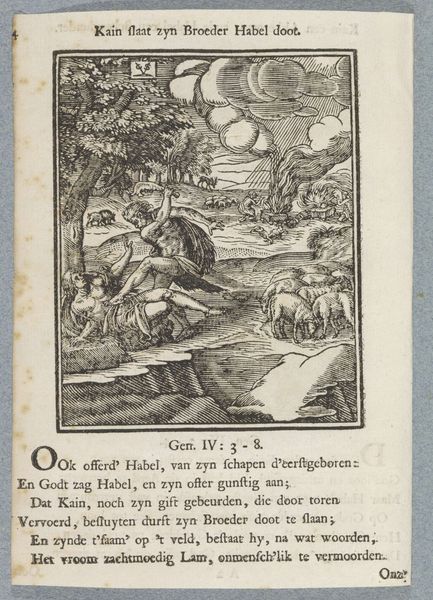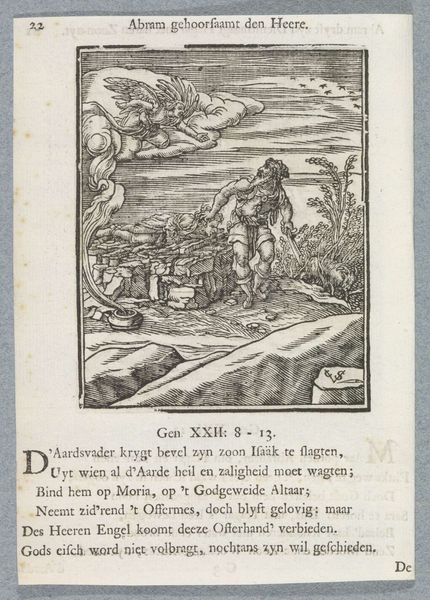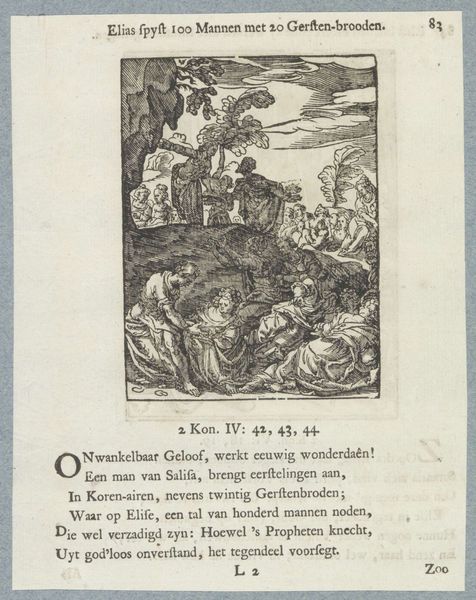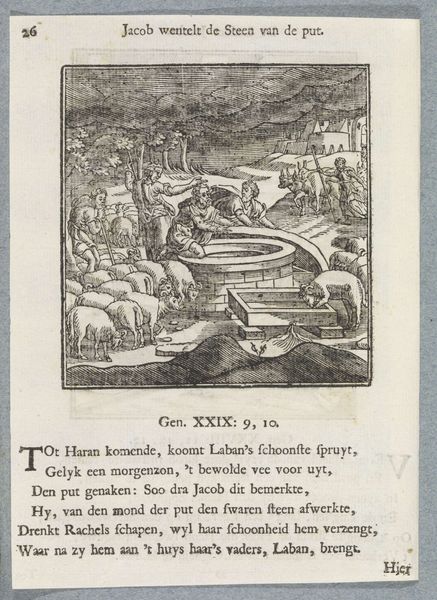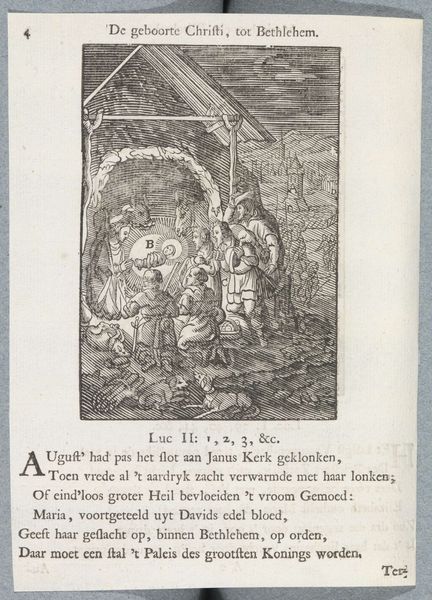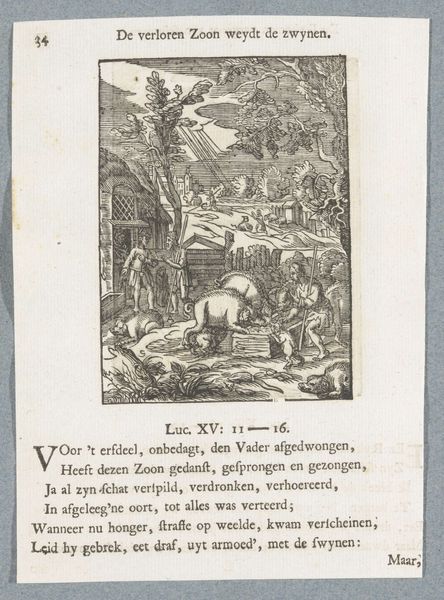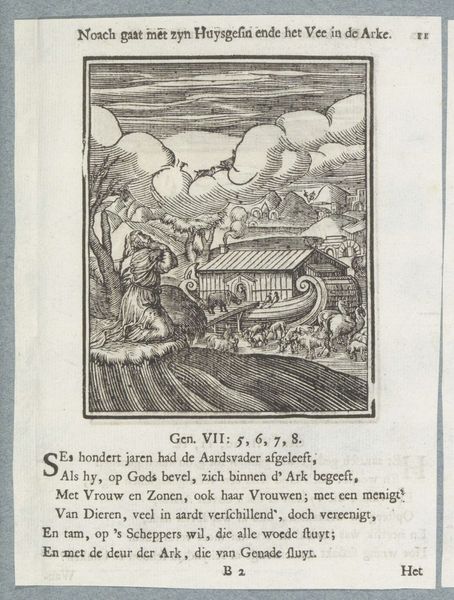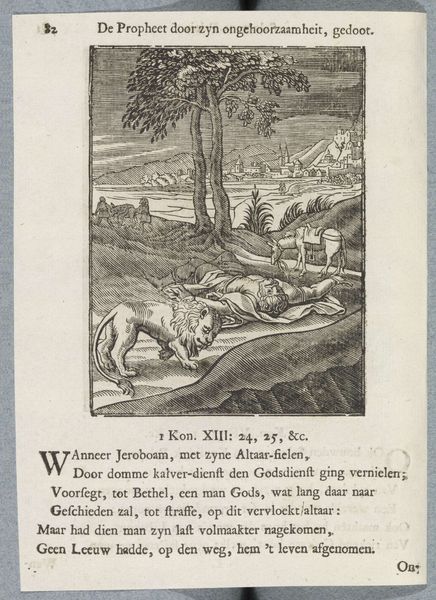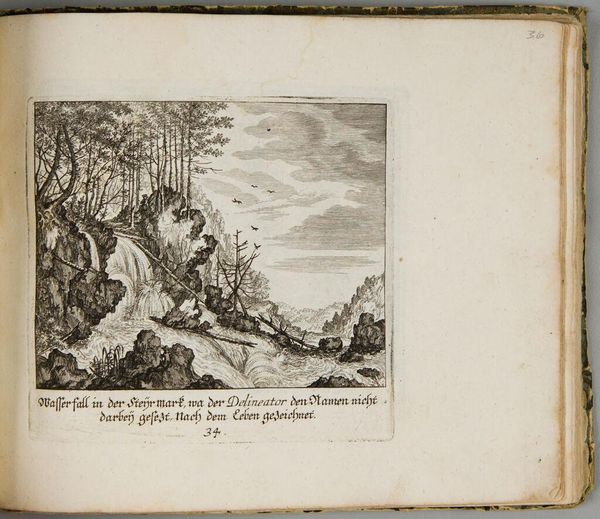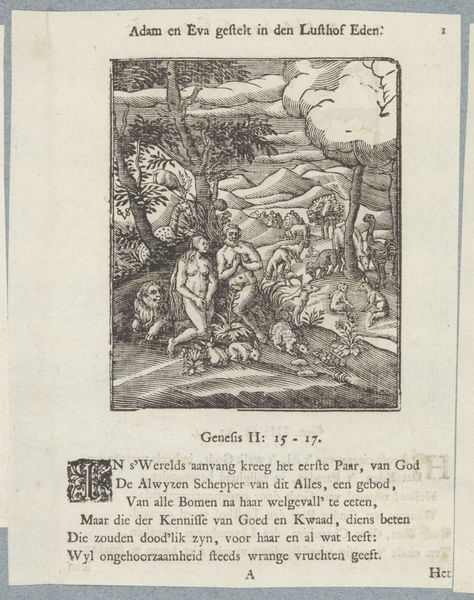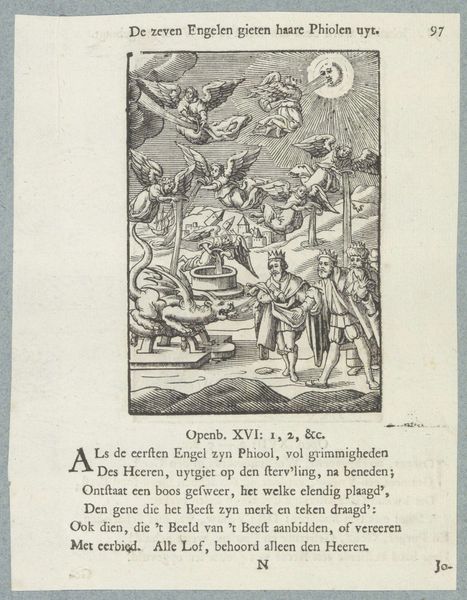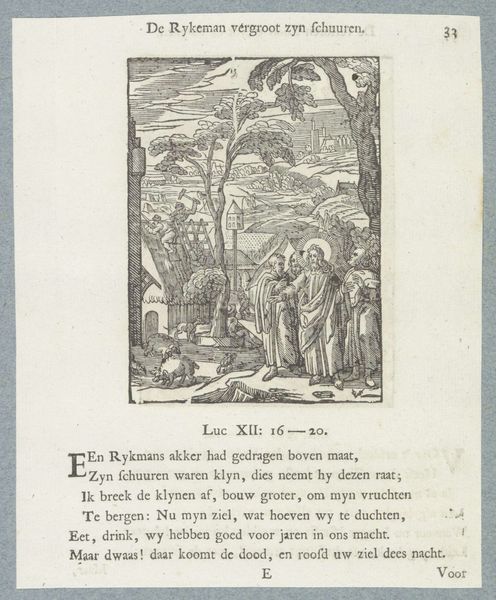
Jakob legt afgeschilde takken in de drinkbakken van de schapen 1645 - 1740
0:00
0:00
print, engraving
#
medieval
#
narrative-art
# print
#
landscape
#
figuration
#
engraving
Dimensions: height 104 mm, width 73 mm, height 169 mm, width 125 mm
Copyright: Rijks Museum: Open Domain
Curator: Welcome. Here we have a fascinating print, "Jakob legt afgeschilde takken in de drinkbakken van de schapen," attributed to Christoffel van Sichem II, dating from 1645 to 1740. The Rijksmuseum houses this engraving. Editor: My first impression? It’s got a dreamlike quality despite the crisp lines. The stark contrast of the black ink on the white really creates a strange little world, doesn't it? It’s like looking into someone’s memory of a landscape, all simplified and symbolic. Curator: Indeed. Van Sichem’s method here is so interesting—the process of engraving allows for mass production, and here it’s being used to illustrate a specific biblical narrative from Genesis. It's interesting how reproductive media spreads the reach and influence of certain narratives and aesthetics. Editor: Absolutely. And the materials—paper and ink, seemingly simple. But their combination has allowed this image to survive for centuries! What a humble feat, really. This really allows people to understand the labour within art production as this would have taken skill and some time. It may not have taken time for artists doing something similar during our modern times due to technological advances and changing production capabilities. Curator: Right, the very act of making multiples democratizes the image in some way. Compare this to illuminated manuscripts made for an elite patron. It is more widespread and has social availability here. This work also provides evidence on trade systems within countries because there may have been limitations to getting such artwork dependent on their physical location. Editor: Though the subject matter has biblical roots, I’m struck by how universal the theme of labor and reward feels. Curator: That resonates. The stark black and white, coupled with the simplified landscape, emphasizes the symbolic aspects of this narrative. He emphasizes the narrative as it can show a moment for his belief. Editor: This engraving leaves me thinking about how stories transform across time and materials—a testament to enduring narratives, but also the physical impact the material artwork creates for accessibility for artwork at this time period. It encourages how artists continue and reflect previous works but offer their individual views on what this piece entails. Curator: Precisely. The way these tangible elements intersect helps create that enduring conversation between maker, material, and audience throughout history.
Comments
No comments
Be the first to comment and join the conversation on the ultimate creative platform.
